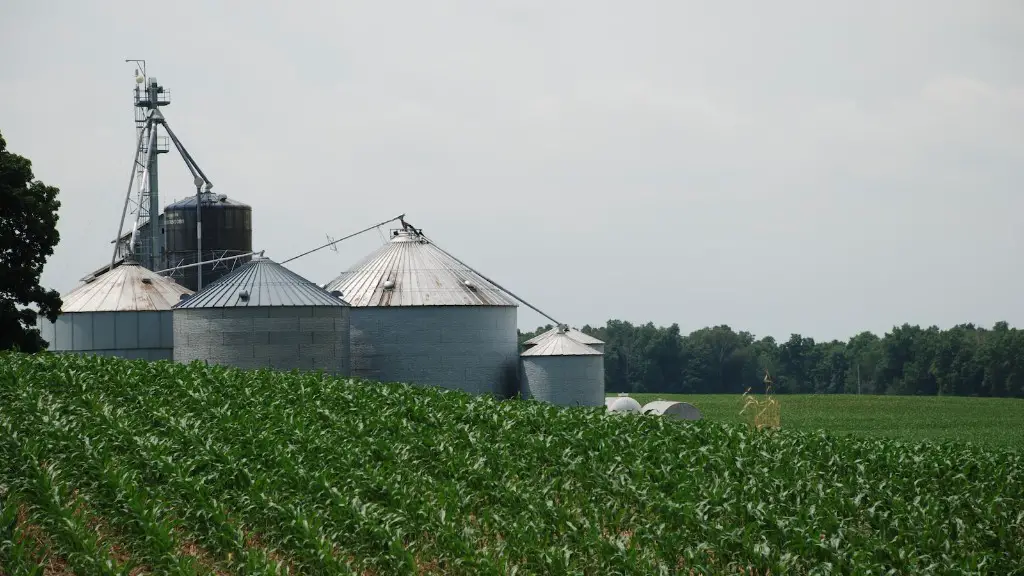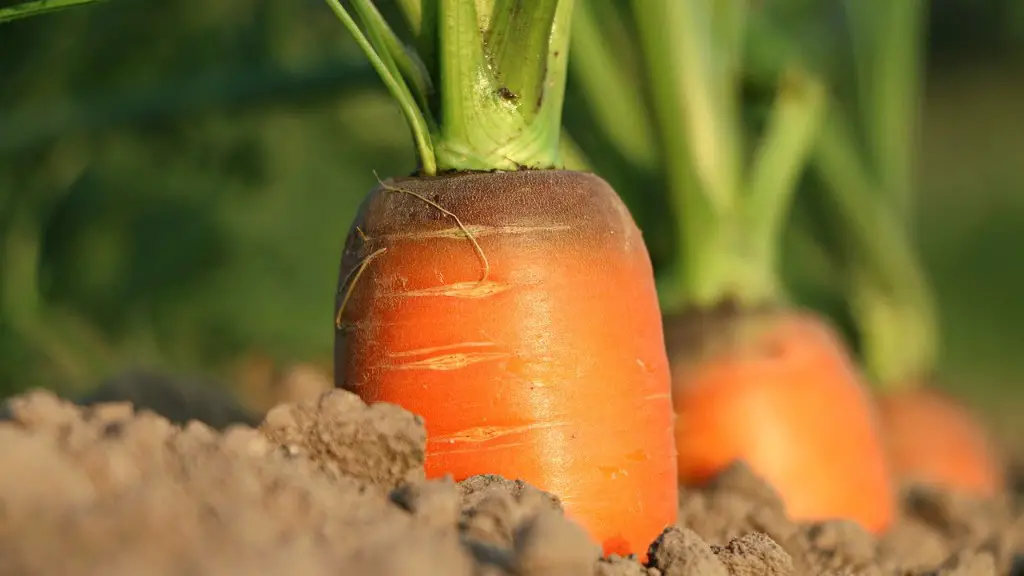Nutrition sensitive agriculture (NSA) is an approach to agriculture that considers the linkages between agriculture and nutrition. The goal of NSA is to improve the nutrition of households, particularly women and children, by improving the productivity and incomes of small-scale farmers, and by enhancing the dietary diversity and quality of diets.
Nutrition sensitive agriculture is an approach to agriculture that takes into account the nutritional needs of people and the surrounding environment. It is a type of agriculture that is designed to provide more nutritious food for people, while also reducing the negative impact of agriculture on the environment.
What is nutrition-sensitive value chain?
A nutrition-sensitive value chain (NSVC) is a food value chain that has been shaped to alleviate constraints in the supply or demand of food, as they relate to dietary and nutrition problems. In other words, an NSVC is a food value chain that has been designed with the intention of improving dietary and nutrition outcomes.
There are many different ways to design an NSVC, but all NSVCs share a common goal: to improve the nutritional status of a population by making nutritious foods more available, affordable, and/or desirable. In order to achieve this goal, NSVCs must address one or more of the following three constraints:
1. The supply of nutritious food: This constraint refers to the availability of nutritious food. An NSVC can address this constraint by increasing the production of nutritious foods, improving access to existing supplies of nutritious food, or both.
2. The demand for nutritious food: This constraint refers to the desire or willingness of individuals to consume nutritious foods. An NSVC can address this constraint by changing attitudes and beliefs about nutrition, increasing the availability of information about nutrition, or both.
3. The affordability of nutritious food: This constraint refers to the price of nutritious food relative to other goods and
There is a growing body of evidence that demonstrates the effectiveness of nutrition-specific and nutrition-sensitive interventions in improving the nutritional status of women and children. These interventions include food supplementation, micronutrient supplementation, fortification, and behavioral change interventions.
High-impact nutrition-specific actions that have been proven to be cost-effective and are ready to be scaled up through existing delivery platforms include:
1. Food supplementation programs, such as the provision of fortified foods or supplementary foods, which have been shown to be effective in improving the nutritional status of women and children.
2. Micronutrient supplementation programs, such as vitamin A supplementation, which have been shown to be effective in reducing mortality and morbidity among children.
3. Fortification programs, such as flour fortification with iron, which have been shown to be effective in improving the nutritional status of women and children.
4. Behavior change interventions, such as education on breastfeeding and complementary feeding practices, which have been shown to be effective in improving the nutritional status of women and children.
What is nutrition in agricultural science
Nutrition is the key to maintaining a healthy body and mind. It is essential to consume a variety of nutritious foods in order to get all the nutrients our bodies need. This includes vitamins, minerals, carbohydrates, proteins, and fats. Eating a balanced diet helps to ensure that our bodies receive the nutrients they need to function properly.
The United States Department of Agriculture, also known as the USDA, is a federal agency responsible for overseeing the country’s agricultural industry. The USDA’s responsibilities include developing and enforcing agricultural policies, conducting research on agricultural issues, and providing financial assistance to farmers and ranchers. The USDA also manages the National School Lunch Program, which provides free or reduced-cost lunches to children from low-income families.
What are nutrition sensitive agriculture interventions?
Nutrition-sensitive agriculture is a food-based approach to agricultural development that puts nutritionally rich foods, dietary diversity, and food fortification at the heart of overcoming malnutrition and micronutrient deficiencies.
This approach has the potential to improve the nutritional status of populations by increasing the availability of nutrient-rich foods, diversifying diets, and improving the absorption and utilization of essential nutrients.
In order to be effective, nutrition-sensitive agriculture must be tailored to the specific needs of the population and the local agro-ecological conditions.
It is also important to ensure that nutrition-sensitive agriculture is integrated into other sectors, such as health, education, and social protection, in order to maximize its impact.
Nutrition sensitive interventions are those approaches and activities that address the underlying determinants of foetal, infant and child nutrition such as food security, caregiving at the maternal, household and community levels, access to health services, to safe water and a hygienic environment.
Why nutrition sensitive agriculture is important?
The term “nutrition-sensitive agriculture” (NSA) has been defined as “an approach to agriculture that takes into account the linkages between agriculture and nutrition with the objective of improving the dietary intakes and nutritional status of households, particularly of women and young children” . Nutrition-sensitive agriculture interventions can be implemented at different stages of the agriculture value chain, from production through to consumption/ marketing.
One of the key elements of NSA is to ensure that agriculturally produced foods are safe and nutritious. This includes paying attention to the types of crops grown as well as the conditions under which they are produced. For example, crops that are grown in nutrient-rich soils are more likely to be nutrient-dense themselves. Another key element is to make sure that food produced is accessible and affordable to all. This means ensuring that markets function well and that prices are fair.
The ultimate goal of NSA is to improve nutrition and dietary intakes, particularly for vulnerable groups such as women and young children. Good nutrition is essential for good health, and improving the diets of these groups can have a ripple effect on the health and wellbeing of future generations. Given the importance of agriculture in most developing countries, NSA represents a potentially powerful tool for combating malnutrition.
There are many ways to improve processing, storage and preservation of food to retain nutritional value and food safety, to reduce seasonality and post-harvest losses, and to make healthy foods convenient to prepare. Some of these methods include:
1. Improved processing techniques: using techniques that preserve more nutrients and improve food safety.
2. Improved storage methods: using methods that preserve nutrients and reduce food waste.
3. Improved preservation methods: using methods that preserve nutrients and improve food safety.
4. Making healthy foods more convenient to prepare: by providing easy-to-use recipes, pre-prepared foods, and convenient food packaging.
What is the difference between nutrition sensitive and nutrition specific
There are two types of interventions when it comes to nutrition – nutrition specific and nutrition sensitive. Nutrition specific interventions are those which address immediate causes of malnutrition, such as a lack of certain nutrients. Meanwhile, nutrition sensitive interventions address underlying causes of undernutrition, such as poverty or poor sanitation. The objective of nutrition specific interventions is to improve the nutritional status of those affected, while the objective of nutrition sensitive interventions is to address the underlying causes of undernutrition.
Plants need different types of nutrients, which are divided into two groups: macro nutrients and micro nutrients, according to their requirements. These nutrients include Nitrogen (N), Phosphorous (P), Potassium (K), Calcium (Ca), Zinc (Zn), Iron (Fe), Boron (B), Sulphur (S), Magnesium (Mg).
Why is nutrition used in agriculture?
Biofortified foods are bred to have higher amounts of micronutrients and can help provide essential vitamins and minerals. Agriculture can play an important role in addressing nutrition security by increasing the availability of total calories and by specific measures on nutrient deficiencies.
We know that improved nutrition leads to better health outcomes, and we also know that better health leads to increased productivity. It follows, then, that improving nutrition in turn supports the agriculture sector by enhancing rural people’s ability to undertake the strenuous tasks involved in small-scale farming.
Investing in nutrition is not only the right thing to do from a humanitarian perspective, but it is also smart agriculture policy. When rural workers are healthy and well-nourished, they are better able to farm effectively, and the whole sector benefits.
What is the difference between the FDA and USDA
The United States Department of Agriculture (USDA) is responsible for overseeing the meat, poultry, eggs, and produce industries. The agency also handles the agencies responsible for US dietary guidelines and Supplemental Nutrition Assistance Program (SNAP) benefits. Meanwhile, the Food and Drug Administration (FDA) regulates the nutrition facts labels on all processed food.
The Agricultural Marketing Service (AMS), Agricultural Research Service (ARS), and Animal and Plant Health Inspection Service (APHIS) are all agencies within the United States Department of Agriculture (USDA). The Economic Research Service (ERS), Farm Service Agency (FSA), Food and Nutrition Service (FNS), Food Safety and Inspection Service (FSIS), and Foreign Agricultural Service (FAS) are all programs within the USDA.
What are three things the USDA recommends as guidelines for good nutrition?
A healthy dietary pattern is important at every life stage in order to maintain good health. It is important to customize your diet to reflect your personal preferences, cultural traditions, and budget considerations. Focus on meeting your food group needs with nutrient-dense foods and beverages, and stay within your calorie limits.
The expected outcomes of the food and agricultural systems include increased knowledge and evidence to help optimize the impact of these systems. This can be achieved by creating and promoting relevant databases and reports, as well as identifying and addressing knowledge gaps. By doing so, we can help to make these systems more efficient and effective in meeting the needs of the people they serve.
Conclusion
Nutrition sensitive agriculture (NSA) is an approach to agriculture that considers the nutritional needs of people as the primary goal. It focuses on increasing the production of nutritious food, while also protecting and enhancing the natural resources used to produce food. NSA is an entry point for sustainable development, as it not only increases food security and nutrition, but also contributes to other development goals such as poverty alleviation, gender equality, and environmental protection.
Unfortunately, there is no silver bullet for the challenges nutrition sensitive agriculture faces. It is a complex problem that requires a multi-faceted approach. Nutrition sensitive agriculture is a step in the right direction, but much more needs to be done to make a meaningful impact on the problem of malnutrition.





